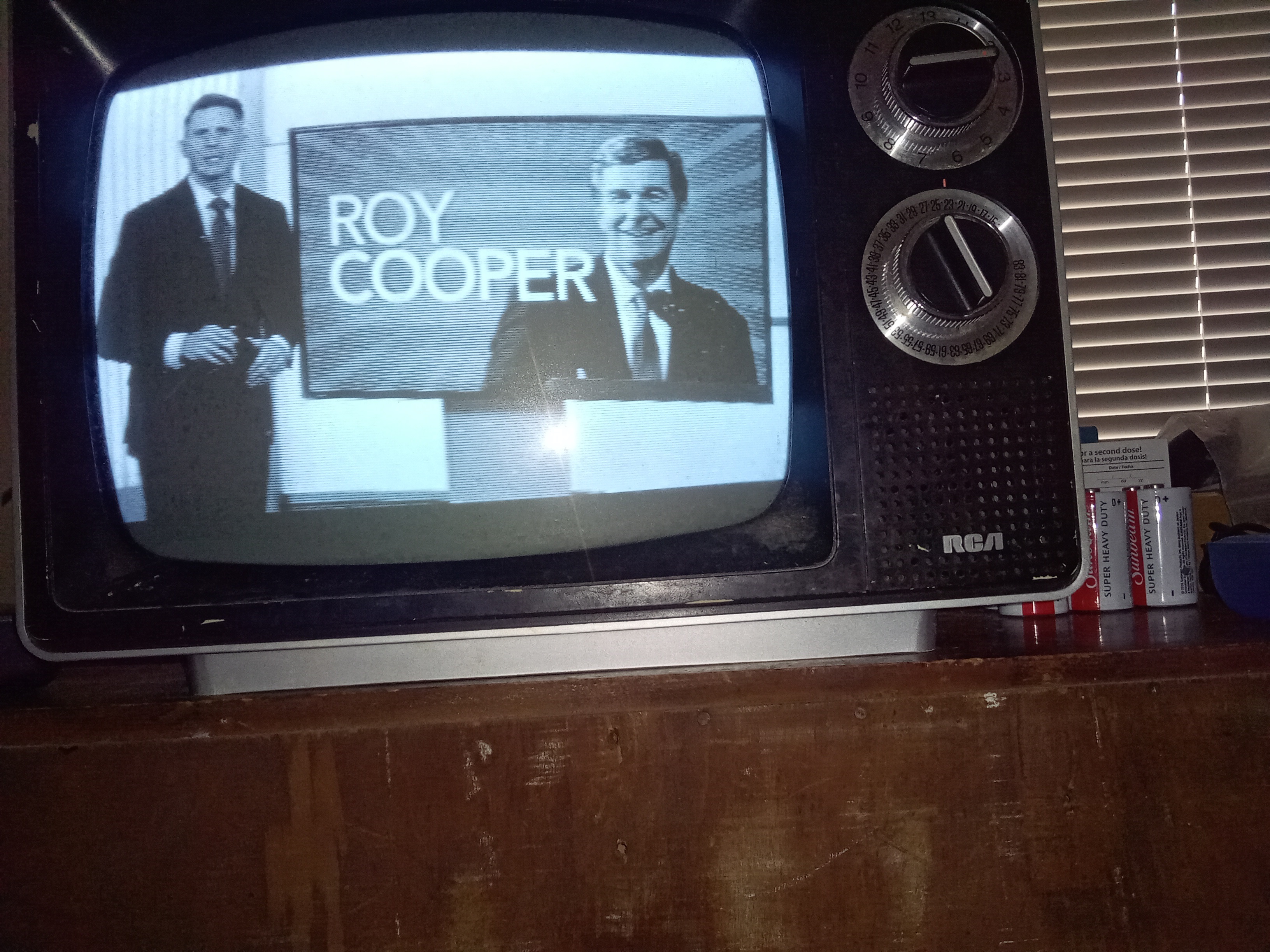As far as I can tell the picture is no different than a standard analog transmission over channel 3. Horizonal and vertical hold work as usual. The TV also has a brightness control, and as far as I can tell the picture, which I am watching right now, is a fully rendered black-and-white display.
Link to (low quality) screen shot of (cheap) Insignia over-the-air converter connected to RCA black-and-white TV:

Yes. So-called “black & white TV” is actually “grayscale TV”. Kind of like nobody called World War One by that name until there was a World War Two, b&w TV was just plain “TV” until color TV came along. Then they had to invent a distinguishing retronym for it. “black and white” got the nod.
Black and white film for movies or still prints or still slides is also actually grayscale. Sometimes called “monochrome” because that’s really what it is. One color (“gray”) varying in saturation value from none to total.
Congratulations, you used a word I had to look up! Outside of technical terms, that rarely happens!
You win … A New Lamborghini!!!
Well, a picture is all I can afford. LOL
And a damned fine picture it is. Now I’m in car-lust.
Just a few days ago I was feeling nostalgic about old hand-held TVs. I had one similar to this in college (which I sold because of the bad reception in my apartment)
And I had one of these, bought used at a flea market, that I had completely forgotten about this until seeing this picture.
That one had a screen lying flat that you watched through an angled mirror when you opened the clamshell. B&W. But anyway, I wondered what you could get in the form of OTA handheld TVs today, and there are some pretty cool choices, like this:
https://www.amazon.com/Portable-Rechargeable-Battery-Operated-Digital/dp/B00WRO9XBE/
Antenna and media file playback via USB. Also by MicroSD, but for some odd reason the ads list it as “TF”, which refers to the original and very dead name Transflash. The zombie of the name Transflash just became old enough to vote, as a matter of fact.
Hercules Grytpype-Thynne: “And there are more pictures where that came from!”
A friend of mine back in the day had a portable radio that also received television audio - which makes sense, because old analog braodcast TV’s audio signal was just an FM broadcast on a slightly higher frequency from the channel’s AM video.
A lot of TV content was almost as easy to appreciate with just the audio.
Phil Nelson runs Antique Radio webpage. Despite the name he restores a fair number of vintage Televisions from the 1940s and later.
As you can imagine it is an involved process. But great reading, lots of pictures to explain.
I think that’s backwards. TV video signal was frequency modulated, and the audio was amplitude modulated.
NTSC uses FM for audio and AM (technically vestigial sideband) for video
Brian
In ye olde analog days, if you had a Channel 6 TV station in your area, you could crank your FM receiver down below 88 mhz (where the FM band starts, and pick up the audio portion of Channel 6 at 87.75.
As a matter of fact, in some places you still can.
One of Chicago’s most popular radio stations is WRME at 87.75, which plays an Oldies format, and is affiliated with the MeTV network. MeTV offers nostalgic TV shows. One of its best original offerings is “Svengoolie,” who shows classic (and sometimes not so classic) horror and sci-fi movies on Saturday nights.
Until this thread I didn’t realize the meme of kids too close to the TV getting irradiated had an origin. I vaguely remember a cartoon of a TV with the shadow of kids on the floor in front of it. Possibly from Mad Magazine.
Quoting engineer_comp_geek from 2023, about the fifth post from the top:
This was specifically what I was told as a child: color TVs were dangerous if you sat too close to them. You had to sit back at least 6 feet.
I thought, “Who would want to sit any closer? The picture dissolves into a frenetic array of dots that are each green, red, or blue.”
The closer you sit, the wider the viewing angle. Kids ain’t picky.
The stories about X-rays from color TVs were prevalent when I was a kid. As an experiment, my dad got some X-ray film from our family dentist and taped it to the corners of the TV screen. After a couple of weeks, he took the film back to the dentist, who developed it to see whether it was fogged. It wasn’t.
You don’t say!
I’ve done that more times than I care to recall. LIke I could be replaced by a simple macro that outputs the same content whenver I see the same stimulus in the form of a post.
